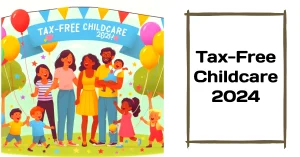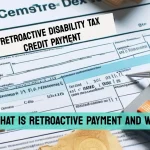For Advertising Contact Us
Tax Free Allowance 2024 – What is Tax Free Allowance in UK and How Much is it?

Over in the United Kingdom, understanding the tax free allowance is crucial for individuals to manage their finances effectively. The tax free allowance, also known as the Personal Allowance, is the amount of income you can earn each year without having to pay any income tax on it. For the year 2024, knowing the current threshold is imperative for individuals to plan their finances and taxes efficiently. In this guide, we will research into what the Tax Free Allowance is in the UK for 2024 and how much it amounts to.
What is Tax Free Allowance in the UK?
Definition and Purpose
Allowance in the UK refers to the amount of income an individual can earn without having to pay income tax. This tax-free threshold is designed to ensure that lower-income individuals are not burdened with unnecessary taxes on their earnings, allowing them to have more disposable income for their daily expenses.
Historical Overview
Definition, The concept of tax-free allowances in the UK dates back to the early 20th century when the government introduced personal allowances to exempt a certain amount of income from taxation. Over the years, the allowance has been adjusted to reflect changing economic conditions, inflation rates, and government fiscal policies.
Plus, In recent years, the tax-free allowance in the UK has been gradually increasing, enabling more individuals to earn a certain amount of income tax-free. Understanding how the tax-free allowance works is imperative for individuals to manage their finances effectively and make the most of their earnings without unnecessary taxation.
Types of Tax Free Allowance in the UK
It is important to understand the different types of tax-free allowances available in the UK to make the most of your earnings and savings. Recognizing these allowances can help you optimize your finances and minimize your tax liabilities.
| Personal Allowance | Savings Allowance |
| Marriage Allowance | Pension Allowance |
| Blind Person’s Allowance | Charitable Giving Allowance |
| Trading Allowance | Property Allowance |
| Parental Bereavement Allowance | Entrepreneurs’ Relief Allowance |
Personal Allowance
Allowance: The Personal Allowance is the amount of income you can earn each year without having to pay any income tax. For the tax year 2024/2025, the Personal Allowance in the UK is set at £12,570.
Savings Allowance
You can earn a certain amount of interest on your savings tax-free thanks to the Savings Allowance. For basic rate taxpayers, the allowance is £1,000, while for higher rate taxpayers, it is £500. Additional rate taxpayers do not receive a Savings Allowance.
One important aspect of the Savings Allowance is that it applies to various types of savings income, including interest from bank accounts, building societies, and credit unions, as well as interest distributions from authorized unit trusts and open-ended investment companies.
Dividend Allowance
One key tax-free allowance to be aware of is the Dividend Allowance, which allows you to earn up to £2,000 in dividends each tax year without having to pay tax. This allowance applies to all individuals who receive dividends on investments such as shares or funds.
With the Dividend Allowance, you can benefit from tax-efficient ways of earning income from your investments, helping you maximize your returns and keep more of your profits. It is important to note that dividends above the £2,000 threshold will be subject to taxation based on your income tax band.
How Much is the Tax Free Allowance for 2024?
Standard Personal Allowance
For the tax year 2024/25, the standard personal allowance in the UK is set at £12,570. This means that individuals can earn up to this amount in a tax year without having to pay any income tax.
Income Limits and Reductions
Allowances can be reduced or even eliminated based on an individual’s income level. For every £2 earned above £100,000, the standard personal allowance is reduced. Once income reaches £125,140, the personal allowance is completely withdrawn.
Step-by-Step Guide to Applying Your Tax Free Allowance
| Determine Your Eligibility | How to Claim Your Allowance |
Determine Your Eligibility
For individuals residing in the UK, determining your eligibility for the tax-free allowance is crucial. Your eligibility depends on various factors including your residency status, employment status, and any additional sources of income you may have. It’s imperative to review the current guidelines set forth by HM Revenue and Customs to ensure you meet the criteria before applying for the tax-free allowance.
How to Claim Your Allowance
Allowance Once you have confirmed your eligibility for the tax-free allowance, the next step is to claim it. This can typically be done through your employer if you are on a PAYE (Pay As You Earn) system. Your employer will adjust your tax code to reflect the tax-free allowance you are entitled to. If you are self-employed or have additional sources of income, you may need to contact HM Revenue and Customs directly to claim your allowance.
Understanding how to claim your tax-free allowance is imperative to ensure you are not paying more tax than necessary. By following the guidelines provided and staying informed about any updates or changes to the tax-free allowance, you can make the most of this benefit and reduce your tax liability.
Tips for Maximising Your Tax Free Allowance
Many individuals aim to make the most of their tax-free allowance each year to reduce their tax liability. To maximise your tax-free allowance, consider the following tips:
- Contribute to tax-advantaged accounts such as ISAs or pension schemes.
- Utilise capital gains tax exemptions by planning your investments wisely.
- Take advantage of tax relief on charitable donations.
Recognizing the various ways to utilise your tax-free allowance can help you significantly reduce your tax burden and keep more of your hard-earned money in your pocket.
Tax Planning Strategies
Planning ahead is key when it comes to maximising your tax-free allowance. Consider spreading your income across different tax years to make the most of each year’s allowance. Utilise tax-efficient investment opportunities and seek professional advice to ensure you are making the most of available tax reliefs.
Avoiding Common Mistakes
With careful planning and attention to detail, you can avoid common mistakes that may result in missing out on your full tax-free allowance. Be diligent in keeping track of your income and expenses to ensure you are accurately calculating your tax liability. Additionally, stay informed about any changes to tax laws that could impact your allowances and make adjustments accordingly.
Strategies like regular tax reviews and staying informed about tax law changes can help you avoid pitfalls and maximise your tax-free allowance each year.
Factors Affecting Your Tax Free Allowance
Your tax-free allowance in the UK can be influenced by several key factors. Understanding these factors is crucial for managing your finances efficiently. By considering these elements, you can make informed decisions about your tax obligations.
Income Levels
While your tax-free allowance is a set amount, your income levels can impact how much of it you can actually utilize. Higher incomes may reduce the tax-free amount available to you, so it’s crucial to consider your earnings when planning your finances. Knowing where you stand in terms of income can help you maximize your tax allowance effectively.
Age Considerations
Factors such as your age can also play a role in determining your tax-free allowance. Plus, different age groups may have specific allowances or exemptions that could affect your overall tax position. It’s crucial to be aware of any age-related considerations that may apply to you to ensure you are taking full advantage of your tax-free allowance.
Change in Circumstances
There’s always a possibility for changes in your circumstances that could impact your tax-free allowance. Whether it’s getting married, starting a new job, or experiencing any other significant life event, these changes could alter the amount of tax-free allowance available to you. Understanding how these changes can affect your tax position is key to managing your finances effectively.
Pros and Cons of Tax Free Allowance
| Pros | Cons |
| Reduces tax burden on lower income individuals | May incentivize lower income individuals to work less |
| Encourages saving and investment | Can lead to budget deficits for the government |
| Helps stimulate economic growth | Higher income individuals may not benefit as much |
Benefits to Taxpayers
You can benefit from tax-free allowances by reducing your overall tax liability, allowing you to keep more of your hard-earned money. This can provide financial relief and help you achieve your savings goals more easily.
Potential Drawbacks
There’s a risk that tax-free allowances may lead to lower government revenue, impacting public services and infrastructure investments. Additionally, higher income individuals may not see significant benefits from these allowances, creating inequality in the tax system.
Free tax allowances can potentially encourage tax evasion if individuals exploit loopholes or misrepresent their income to qualify for the allowance. It is crucial for tax authorities to monitor and enforce regulations to prevent misuse of tax-free allowances.
To wrap up
The Tax Free Allowance in the UK for the year 2024 provides individuals with a threshold below which they do not need to pay income tax. This allowance is set at £12,570 for the 2024/25 tax year. Understanding and utilizing your tax-free allowance can help you manage your finances effectively while staying compliant with tax regulations. Make sure to keep track of any changes in the allowance and seek professional advice if needed to optimize your tax planning strategies.





